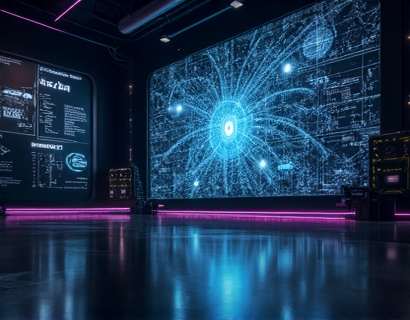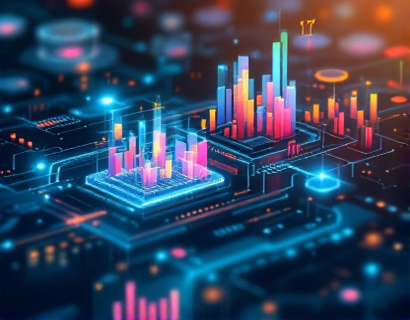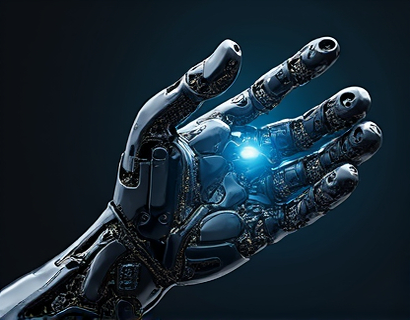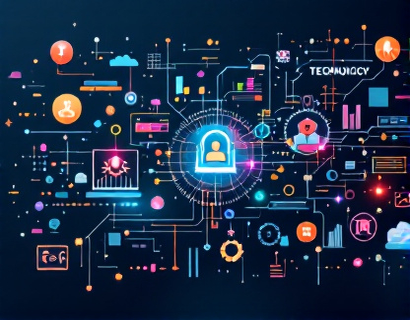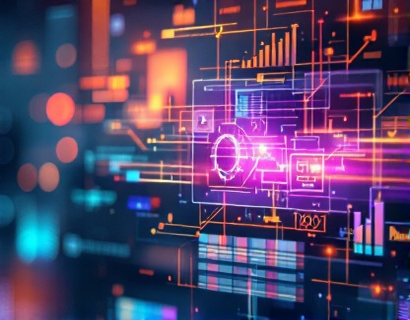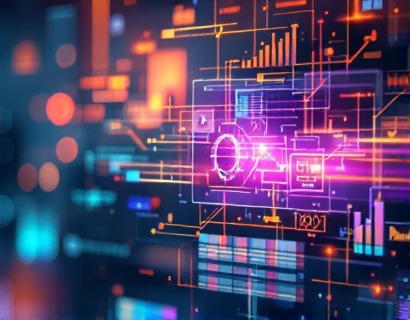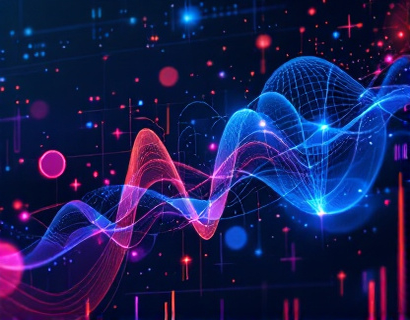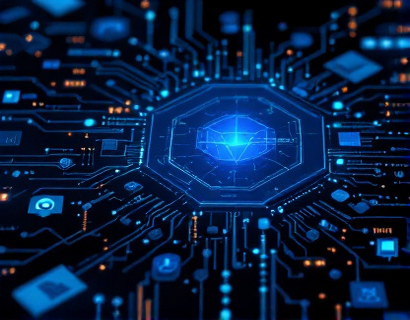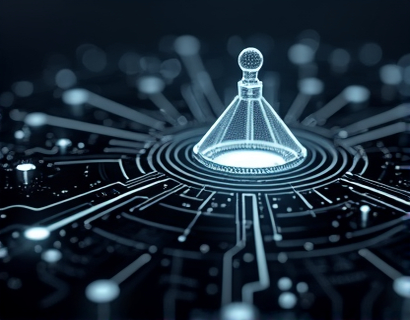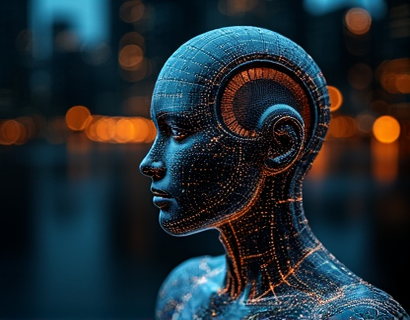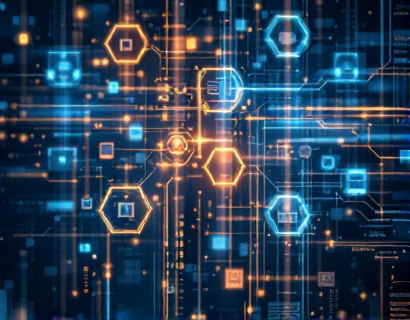Revolutionizing Digital Interactions: The Synergy of Crypto and AI
The intersection of cryptocurrency and artificial intelligence (AI) is giving rise to a new era of digital experiences. This fusion is not just about combining two cutting-edge technologies but about creating a paradigm shift in how we interact with digital apps and services. The integration of blockchain's decentralized nature with AI's computational prowess is paving the way for enhanced security, efficiency, and personalization in digital interactions.
Enhanced Security Through Cryptographic Techniques
One of the primary benefits of leveraging cryptocurrency in digital services is the robust security it offers. Cryptographic techniques inherent to blockchain technology ensure that data transactions are secure and tamper-proof. AI enhances this by continuously monitoring and analyzing patterns to detect and prevent fraudulent activities. This dual-layer security approach provides users with peace of mind, knowing their data and transactions are protected against cyber threats.
AI-Driven Personalization in Crypto Services
AI algorithms can process vast amounts of data to understand user preferences and behaviors, enabling highly personalized experiences. In the context of crypto services, this means tailored investment advice, customized portfolio management, and personalized notifications based on user activity. For instance, an AI-driven platform can analyze market trends and suggest optimal times for trading, or recommend specific cryptocurrencies based on a user's risk tolerance and investment goals.
Decentralized AI Models
The concept of decentralized AI models is gaining traction, especially when combined with blockchain technology. These models allow AI algorithms to be trained and run on a decentralized network, ensuring that no single entity has control over the entire system. This not only enhances privacy but also promotes transparency and fairness. Users can contribute to the training of AI models by providing data, and in return, they can be rewarded with cryptocurrency tokens, creating a symbiotic relationship.
Tokenized Incentives for Data Contribution
In a decentralized AI ecosystem, users are incentivized to share their data through token rewards. These tokens can be used within the platform or exchanged for other cryptocurrencies, providing a tangible value for data contribution. This model encourages more users to participate in data sharing, which is crucial for training AI models. The use of blockchain ensures that data contributions are verified and rewarded fairly, fostering a trustworthy environment.
Smart Contracts for Automated and Trustless Interactions
Smart contracts, self-executing contracts with the terms directly written into code, are a cornerstone of blockchain technology. When integrated with AI, smart contracts can automate complex processes with minimal human intervention. For example, in decentralized finance (DeFi), AI can analyze market conditions and automatically execute trades based on predefined criteria. This not only speeds up transactions but also reduces the risk of human error and fraud.
Enhancing Trust through Transparency
The transparency provided by blockchain ensures that all transactions and contract executions are visible and verifiable by all parties involved. This level of transparency builds trust among users, especially in financial applications where trust is paramount. AI can further enhance this by providing real-time analytics and insights, helping users make informed decisions based on transparent data.
Improved User Interfaces with AI
AI-driven user interfaces (UI) are revolutionizing the way users interact with digital services. Natural Language Processing (NLP) allows for more intuitive and conversational interactions, making it easier for users to navigate complex crypto applications. Voice assistants and chatbots powered by AI can provide instant support and guidance, enhancing the overall user experience. This is particularly beneficial for users who may not have a deep technical background but still want to engage with advanced crypto services.
Personalized User Interfaces
AI can analyze user behavior and preferences to dynamically adjust the UI, providing a more tailored experience. For instance, frequently used functions can be placed more prominently, and notifications can be customized based on user activity. This level of personalization not only improves usability but also increases user engagement and satisfaction.
Optimized Performance through AI
AI can significantly enhance the performance of crypto applications by optimizing resource usage and improving efficiency. Machine learning algorithms can predict and manage network congestion, ensuring smooth and fast transactions even during peak times. Additionally, AI can optimize energy consumption in blockchain networks, addressing one of the major criticisms of cryptocurrency: its environmental impact. By efficiently managing computational resources, AI helps make crypto services more sustainable.
Scalability Solutions
Scalability remains a critical challenge for blockchain technology. AI can play a pivotal role in developing scalable solutions by analyzing network data and identifying bottlenecks. For example, AI can optimize the consensus mechanism used in a blockchain network, switching between different algorithms based on current network conditions to maintain high throughput and low latency.
Enhanced Fraud Detection and Prevention
Fraud is a persistent issue in the crypto space, but AI is changing the game. Advanced machine learning models can detect anomalies and suspicious patterns in real-time, enabling immediate action to be taken. These models can learn from past fraud cases to improve their accuracy over time, creating a more secure environment for users. AI-driven fraud detection not only protects users but also enhances the reputation of crypto services, encouraging more adoption.
Behavioral Analysis for Risk Assessment
AI can analyze user behavior to assess risk levels and identify potential fraudulent activities. By monitoring transaction patterns, login attempts, and other user activities, AI can flag unusual behavior and trigger additional verification steps. This proactive approach to security helps prevent losses and builds trust in crypto platforms.
Future Prospects: The Convergence of Crypto and AI
The future of digital interactions is bright with the continued convergence of cryptocurrency and AI. As these technologies mature, we can expect even more innovative applications and services. For instance, the development of decentralized AI marketplaces where users can buy and sell AI models and data sets directly, without intermediaries, is on the horizon. This would democratize access to AI technologies and foster a more inclusive ecosystem.
Interoperability and Cross-Chain Solutions
Interoperability between different blockchain networks is another area where AI can make a significant impact. AI-driven solutions can facilitate seamless communication and data exchange between disparate blockchain systems, enabling a more interconnected and efficient crypto ecosystem. This interoperability is crucial for the widespread adoption of crypto technologies across various industries.
Conclusion
The fusion of cryptocurrency and AI is not just a technological advancement but a transformative force reshaping the digital landscape. By enhancing security, personalization, performance, and user experience, this synergy is setting new standards for digital services. As we move forward, the potential for innovation is vast, promising a future where digital interactions are more secure, efficient, and user-centric. For tech enthusiasts and professionals, this is an exciting time to explore and contribute to this evolving field.



